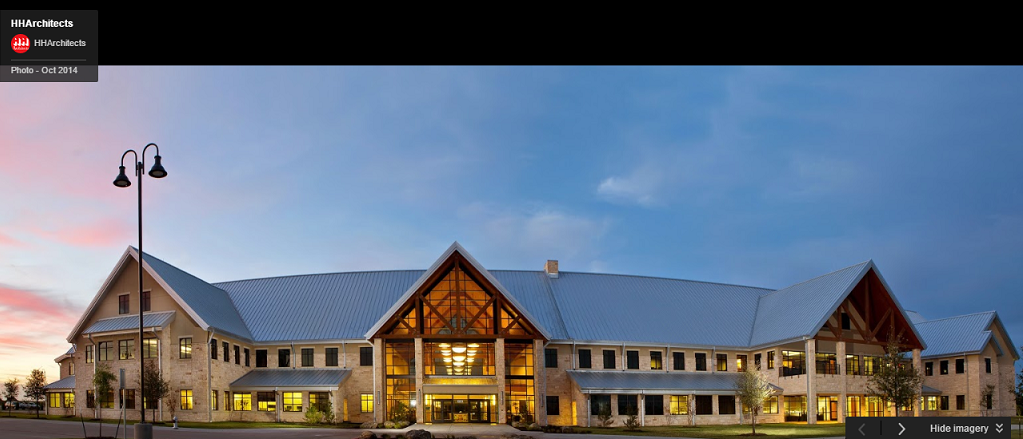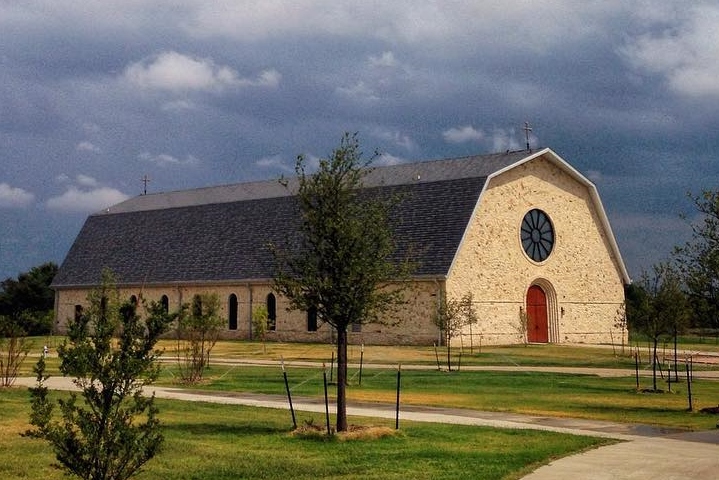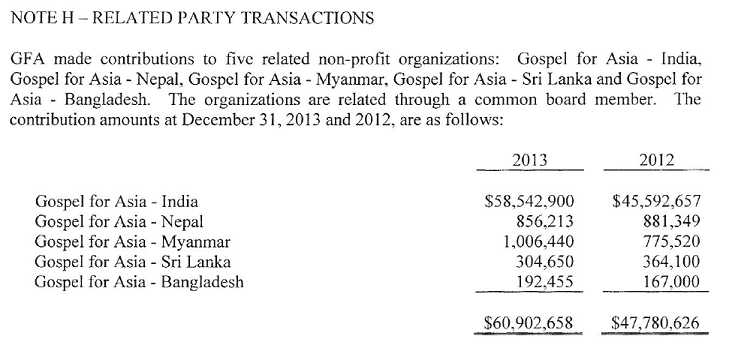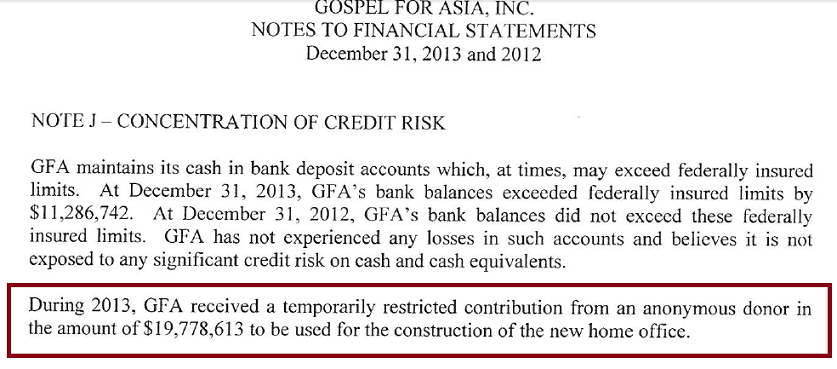In August, I pointed out that Gospel for Asia’s founder and CEO K.P. Yohannan claimed in May 2015 that he was not on any Gospel for Asia or Believers’ Church board in India. At the same time, court papers filed by Believers’ Church and GFA’s and BC’s own websites claimed he leads those boards. Then, I showed that after my posts, Indian Believers’ Church websites taken off line for “maintenance.”
Now, one website is back up with no mention of K.P. Yohannan as chair of the Believers’ Church trust or a member of the Believers’ Church Residential School management committee. Yohannan’s son Daniel has also been removed from the committee listing.
Yohannan may indeed have stepped off of the school’s management committee. However, there is no evidence that is has stepped down from the Believers’ Church board. He is the Metropolitan Bishop so even if the church removes his name from this web list, Yohannan remains the leader of the church.
More importantly, Yohannan was listed on numerous legal documents in India as managing trustee of Gospel for Asia and the Believers’ Church at the time the church took out a loan in India (early 2013) in order to give nearly $20 million to GFA in the U.S. for the purpose of building a massive headquarters and compound in Wills Point, TX.
Category: K.P. Yohannan
Question for Gospel for Asia: How Many Indian Churches Would $45 Million Build?
In Revolution in World Missions, K,P. Yohannan says the money needed by the rest of the world’s churches is held by North American Christians. Because he believes this, he has strong words for church leaders who construct expensive churches:
Is it God’s fault that men like Brother Paulose are going hungry? I do not think so. God has provided more than enough money to meet Paulose’s needs and all the needs of the TwoThirds World. The needed money is in the highly developed nations of the West. North American Christians alone, without much sacrifice, can meet all the needs of the churches in the Two-Thirds World.
A friend in Dallas recently pointed out a new church building that cost $74 million. While this thought was still exploding in my mind, he pointed out another $7 million church building going up less than a minute away.
These extravagant buildings are insanity from a Two-Thirds World perspective. The $74 million spent on one new building in the United States could build thousands of average-sized churches in South Asia. The same $74 million would be enough to guarantee that the Good News of Jesus Christ could be proclaimed to a whole Indian state—or even some of the smaller countries of Asia.
But I rarely spoke out on these subjects. I realized I was a guest. The Americans who had built these buildings had also built the school I was now attending, and they were paying my tuition to attend. It amazed me, though, that these buildings had been constructed to worship Jesus, who said, “The foxes have holes, and the birds of the air have nests; but the Son of man hath not where to lay his head” (Matthew 8:20).
In Asia today, Christ is still wandering homeless. He is looking for a place to lay His head, but in temples “not made with human hands.” Until they can build a facility of their own, our newborn Christians usually meet in their homes. In nonChristian communities, it is often impossible to rent church facilities.
There is such an emphasis on church buildings in the United States that we sometimes forget that the Church is the people— not the place where the people meet.
But God has not called me to fight against church building programs—we try to provide adequate church buildings for the small but growing Asian churches whenever possible. What troubles me much more than the waste is that these efforts often represent a worldly mindset. Why can’t we at least earmark 10 percent of our Christian giving for the cause of world evangelism? If Christians in the United States alone had made this commitment in 2000, there would have been nearly $10 billion available for Gospel outreach! (Revolution in World Missions, pp 47-48.)
I am not drawn toward large churches or extravagance so I can relate to Yohannan’s negative reaction. Some of my interest in the Global Fund story at Mars Hill Church was driven by my curiosity about what Mars Hill did with the funds given for missions. As it turns out, much of the money (“the preponderance”) was spent on U.S. expansion rather than supporting the basic needs of mission pastors.
In my interviews with former GFA staff, a recurring topic is the discrepancy between the rhetoric of moderation and the reality of excess. A case in point is the relocation and building of the new GFA compound at Wills Point, TX. The project cost around $45 million. Staff were told that the project would save money. Former staff I have talked to indicate that they had to spend more money to live when they moved to Wills Point than before the move. More about that in the days to come.
Below is a picture of Gospel for Asia’s headquarters completed recently. There is a gallery of the GFA campus posted (for now) at HH Architects website.



Here is the multimillion dollar chapel.

I realize things cost money and GFA needs a headquarters. However, this project required nearly $20 million from “the field” to complete. Believers’ Church in India had to borrow $20 million for GFA’s American offices.* I am trying to reconcile this what I read in Revolution in World Missions.
*I need to add that the project included staff housing, including for K.P. Yohannan. Numerous homes were built along with the HQ.
Evangelical Council for Financial Accountability Reviewing Gospel for Asia
This morning Christian Today’s Mark Woods reports that the Evangelical Council for Financial Accountability is reviewing Gospel for Asia.
Woods takes note of the controversy surrounding GFA and says that the review is expected to last until October. At that time, GFA will provide answers to “outstanding questions.”
Woods and Christian Today have provided some good coverage of this matter while everybody else appears to be sitting on their hands. Perhaps they are waiting for the review results as well.
Waiting for the completion of a review to answer basic questions is puzzling and troubling. One basic question relates to the claim that $58.5 million dollars was sent to Gospel for Asia in India during the calendar year 2013. However, during that same span of time, GFA in India only reported receiving around $6 million from GFA in the U.S. I cannot understand why GFA must wait until ECFA completes a review to address that discrepancy.
Furthermore, the 2013 audit says does not tell donors about the funds sent to Believers’ Church and two other Indian NGOs. Why not? And then there is the 2013 Canadian funds ($15 million CAD) which are not listed as being received in India despite the fact that GFA in Canada told the Canadian government those donations were being sent to India. Why does GFA need to wait until October to answer donor questions such as those asked by long-time supporter Pastor Bruce Morrison?
GFA president says he doesn’t sit on the Indian boards of GFA and Believers’ Church. Legal documents filed by GFA and BC in India say he does. Why do we need to wait until October for K.P. Yohannan to explain that discrepancy? Will Indian documents change by October?
Back room discussions continue…
Complaint Filed Against Gospel For Asia Australia Over Funds Sent to India
Australia blogger Ted Sherwood has filed a complaint with the Australian Charities and Not-for Profits Commission regarding Gospel for Asia Australia’s contributions to India. Money GFAA claimed went to GFA in India also went to Believers’ Church. Sherwood’s disclosure is in a footnote to a detailed analysis of GFAA’s financial reports.
In the analysis, Sherwood says:
I have confirmed, from Indian government records (go here and select the year and Kerala), that approximately $2.1 m arrived in India.
- The expense recorded below is $2.2 m, but without the exact transfer dates and translation rates, I cannot be more accurate.
- But, equally as important, the same records show that not all this $2.1 m was sent to Gospel for Asia as Monica says here – 52% went to Believers Church[x]
This is a similar issue in the American audit. GFA-US said they sent $58.5 million to GFA-India in 2013 but only $6 million showed up on records filed by GFA-India. Another $22.5 was sent to Believers’ Church and two other NGOs affiliated with BC.
In his analysis, Sherwood raises many questions about the use of funds in India and how Australian donors can trust that their funds are being spent as intended. For instance, Australian donors aren’t told that a substantial portion of funds are being sent to Believers’ Church. Rather, GFAA says:

As with the U.S. audit, GFA doesn’t tell donors that the lion’s share of the donations actually go Believers’ Church. In India, GFA says it is “a community development arm of Believers’ Church.” Why is the role of Believers’ Church obscured?
There may be good reason to wonder if BC or GFA-India will spend funds as intended. BC and GFAI have faced scrutiny in India over use of funds with one Indian court asserting that
It is not in dispute that substantial income of the assessee trust was not used by both the assessees for the purposes for which they were formed.
It is a huge red flag when audits and organization documents fail to include material information and when a court says an organization isn’t spending donation for the intended purpose. It is even more troubling when an organization refuses to comment or clear up what appears to be discrepancies in public records and their claims.
Believers’ Church India Gave Nearly $20 Million to Help Build Gospel for Asia’s New Office Complex
Daily, Gospel for Asia affiliates all over the world solicit donations to help support children and mission activities in Asia. GFA affiliates in the U.S., Canada, the UK, Australia and New Zealand collect money from donors and funnel it to various non-government organizations affiliated with GFA in several Asian nations, most notably India, Nepal, Myanmar, Sri Lanka, and Bangladesh.*
I have recently learned that on at least one occasion the flow of funds was reversed. In May, David Carroll and K.P. Yohannan revealed to GFA’s staff that in 2013 Believers’ Church (GFA in India is an arm of BC) gave nearly $20 million to GFA in the United States toward the construction of a new compound in Wills Point, TX. The compound serves as GFA’s headquarters and the location of GFA’s School of Discipleship. I am getting figures together but my estimates of the costs of the compound were between $30-45 million.
Several staff speaking anonymously due to fears of retaliation told me that staff were told by GFA leaders that an anonymous donor gave the large gift to help complete the project. The 2012 and 2013 audits done by Bland Garvey refer to an anonymous donor as well.

The sentence outlined in red above discloses that GFA received nearly $20 million “from an anonymous donor.” Former staff told me that the impression they had was that a single donor provided the gift and they had no idea that it came “from the field.”
Listen to David Carroll and K.P. Yohannan describe the gift. (Author’s note: When this post was first published I had audio from the staff meeting embedded. On November 13, 2015, I was notified by the management of Patheos that GFA had an attorney demand that Patheos remove the audio. Rather than engage in a costly lawsuit with GFA, management and I decided to remove the embedded audio. Instead, readers may click the link to hear the relevant portion of the staff meeting).
UPDATE on November 25, 2015: A transcript of the audio can now be read at this link. Not only did GFA demand removal of the audio but they demanded that the transcript be removed as well. I do not agree with this demand and am only doing it until I can determine a better course of action. I will leave some of the significant statements up but for now go to this link to read the entire transcript.
Below is a summary of the audio:
David Carroll told staff that there had been a story about a $19 million dollar anonymous gift for the campus construction. He said he wanted to clear up what happened. He said in April of 2013, GFA leaders went to City Bank of Texas for a loan since GFA was running low on funds for campus construction. He said they were about to get the loan when “Brother KP mentioned it to some of the folks in Asia and mentioned that we were not able to do any better than that. We couldn’t, we would loved to have borrowed money from one of the Asian banks cause actually it’s much better terms, it would be much less costly, we weren’t able to do that being a foreign corporation.”
Carroll then said a board under Believers’ Church sent the nearly $20 million dollars because they thought it would be a good investment. Carroll then asked, “Was it field funds that should have gone to Nepal for earthquake victims or…” and then he was interrupted by K.P. Yohannan. Carroll told Yohannan he was getting to Yohannan’s point. Then Carroll said the board on the mission field “actually took a loan from one of their sources to replace that money so they could use it for the purpose it had been designated for there. So in essence, they got our loan.” He added, “They made that decision to give us that money and they wanted it to be anonymous. And I’m a little sad that it’s not anonymous, but I did want to explain to you where it came from, and the reasons behind it, and so, in their minds it was an investment.”
At that point, KP Yohannan chimed in and said, “It’s legal.”
Carroll added, “It’s completely legal, thank you.”
Carroll then claimed that the transaction was not a related party transaction. He said, “It is not a related party transaction because the board members here, they’re not the same board members as there. In other words, the leadership here did not influence that decision there. Brother KP mentioned it but it was not his decision. He had to get permission…”
KP Yohannan interrupted Carroll to claim that he is only a spiritual father in the Believers’ Church and that he does not “have any legal say or decision about legal matters. My role is a spiritual leadership.” He claimed that he doesn’t sit on any of the trusts in “these countries.”
For the entire transcript, go here.
This narrative raises so many more questions than it answers.
First, the gift
According to the Bland Garvey audit, nearly $19.8 million was given to GFA from the “anonymous donor” which we now know to be an entity of Believers’ Church. According to Carroll, the $19.8 million came from “a board under the Believers’ Church umbrella.” It sounds as though the entity took money given for field work and then replaced it with funds from another source. Carroll said:
But what they did on the mission field is they actually took a loan from one of their sources to replace that money so they could use it for the purpose it had been designated for there. So in essence, they got our loan. There are several income producing entities in Asia. That’s why partly why we have 35% of our church is self-sustaining, by God’s grace now in Asia. And they felt they could pay that loan off very very quickly.
What source has nearly $20 million dollars which can replace money given by donors for designated purposes? So Believers’ Church borrowed $19.8 million from “one of their sources” in order to replace money given for other purposes but given instead as a gift to GFA in the United States. I am not sure about the legality of sending donor money back to GFA when an Indian NGO borrows it from another part of their operation.
I also wonder why the Indian NGO needs donations from GFA affiliates if it can “very very quickly” repay a $19.8 million loan. GFA said they sent $58.5 million to India in 2013 while Indian government reports say only $28.5 million came in. This is one of the big discrepancies GFA refuses to address. For now my purpose is to show how the $19.8 million gift compares to what GFA sends Indian NGOs per year, and as one can see, the $19.8 million gift is a substantial portion in comparison to what they receive each year.
K.P. Yohannan, his board memberships and related party transactions
As I showed in two prior posts, that K.P. Yohannan is referred to in India as the “managing trustee of Believers’ Church.” However, in this staff meeting, Yohannan again says, along with David Carroll, that he is not on any boards and has no legal standing. While it is possible that he might not be on boards at this moment, he was “managing trustee” up until February 2015. He would have been in management at the time these gifts were given. For GFA leaders to have any credibility on this matter, they need to explain the discrepancy between what Yohannan told the staff in May and what their own websites and legal documents filed in India say. They refer to K.P. Yohannan as managing trustee of Believers’ Church.
Furthermore, Yohannan is also the Metropolitan Bishop of the Believers’ Church. Bishops pledge their allegiance and obedience to him. He sits on the boards of GFA (UK) and GFA NZ. He also sits on the interagency council involving Canada, US and Germany. The gifts were given in order to enhance GFA International which Yohannan leads. Carroll said Yohannan “mentioned it.” Why did he mention it if he has no power? In contrast to what David Carroll said, it is hard not to see this as a related party transaction.
This gift was reported by Bland Garvey but not as a related party transaction. It is oddly posted under “Concentration of Credit Risk.”
Many more questions
I will let readers suggest more questions, but here is one. Why did GFA find itself in so much trouble that a gift from the field was necessary? Did they not anticipate that a $40 million project would require funds? According to the records I have seen, GFA only took in a little over $20 million for the building in 2013. In other words, GFA was in the middle of a building project with no funds and no fund raising campaign. They were bailed out by the funds which came from Believers’ Church which is led by the CEO of Gospel for Asia. What builder would undertake a project of that magnitude without knowing something about the funding? What responsible board would start a $40 million project with no idea where the money would come from?
*These are the major donor nations and recipient NGO locations. There may be more donor nations and there are most certainly additional recipient nations but GFA has not provided specific information on the flow of funds to these nations and public records aren’t readily available.
Transcript:
David Carroll: There is, I don’t want to call it a rumor, a story, an inquiry about, what about the $19 million anonymous gift that was given for the campus back a year or so ago? What’s that all about? Did that come from the mission field, from field funds? So I want to explain that gift to you so that you know.
In about April of 2013, as we were building the campus here, we were running pretty critically short on money. We went to a bank at the time, City Bank of Texas, they’re located in Lubbock. Many of you might remember, we were still at the other building and A group of 11 bankers came, talk about a room, 11 bankers and an accountant and John [Beers]. That’s 12 bankers and an accountant. That was a rip-roaring time. Anyway, um, they came interested in our project to loan to it. So we brought them out here, we showed them the whole thing, we explained our vision, and actually we were working toward finalizing that loan, we were at the place of getting terms from them and when we realized the cost of the loan, Brother KP mentioned it to some of the folks in Asia and mentioned that we were not able to do any better than that. We couldn’t, we would loved to have borrowed money from one of the Asian banks cause actually it’s much better terms, it would be much less costly, we weren’t able to do that being a foreign corporation.
And so, what the people in Asia did, and it is a board that is under Believers’ Church umbrella, but Brother KP’s not on that board, it wasn’t his decision. The decision was made by them that since GFA North America had sent so much money to us from undesignated field funds, where needed most funds over the years, and since this campus to us is seen as an international headquarters which will be leadership training, it will be RYPs, which are always fruitful for the field, every time we have an RYP, the field tends to benefit from that. It will save the ministry somewhere between 4 and 5 million dollars a year when we’re at capacity here which is about 350 people. When that happens, we’re going to receive a lot of that extra money back and so they made the decision while we were in that bank loan process, that rather than go with that bank loan, we would like to make an anonymous gift for the campus fund.
And they did that. Was it field funds that should have gone to Nepal for earthquake victims or
K.P. Yohannan: – (Unintelligible)
DC – I was just getting to that.
KP – Sorry
DC – That’s fine. No, it wasn’t. But what they did on the mission field is they actually took a loan from one of their sources to replace that money so they could use it for the purpose it had been designated for there. So in essence, they got our loan. There are several income producing entities in Asia. That’s why partly why we have 35% of our church is self-sustaining, by God’s grace now in Asia. And they felt they could pay that loan off very very quickly. They made that decision to give us that money and they wanted it to be anonymous. And I’m a little sad that it’s not anonymous, but I did want to explain to you where it came from, and the reasons behind it, and so, in their minds it was an investment.
KP – It’s legal.
DC – It’s completely legal, thank you. There’s a board member, board documents as I understand it, I don’t live in Asia, but there’s board documents on the other side. The whole thing was done in complete legality.
By the way, one question, one part of that question was, is this a related party transaction? And the answer is no. It is not a related party transaction because the board members here, they’re not the same board members as there. In other words, the leadership here did not influence that decision there. Brother KP mentioned it but it was not his decision. He had to get permission, actually they told…
KP – I think David, it is important for people to know the person I am. It’s like Paul said in one place he’s a doulos, he’s a servant, another place he’s an apostle, another place he’s a brother, and my role is being a spiritual father of right now about 2.7 million people scattered throughout all these nations and I do not have any legal say or decision about legal matters. My role is a spiritual leadership. You may not have asked that but there are hundreds of trusts and entities in all these countries. I don’t sit on any of those things. There are their own people. And my role is the spiritual leadership. And I hope to some extent that is here also.